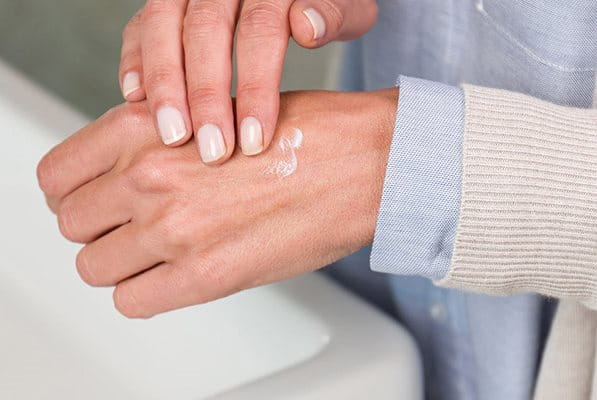The skin on the face is one of our most important body parts. However, when facial skin becomes dry, it can feel rough and tight, even reddened, scaly and itchy. There are several causes for dry facial skin and understanding those will help to discover relevant solutions.
Signs & Symptoms
Skin dryness and the relation to facial skin types
Dry facial skin is a common condition, although some people are more prone to it than others. The main facial skin types are unproblematic (or normal), dry, oily or combination skin. As people get older they also have to consider how skin ageing affects their skin.
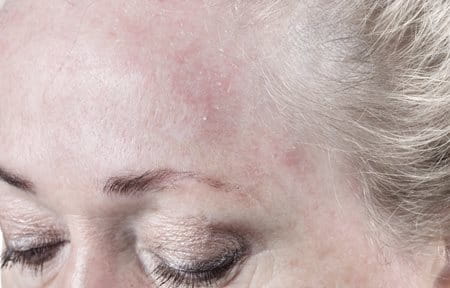
- Unproblematic, well balanced facial skin refers to skin that is neither prone to dryness nor oiliness. Many factors can cause unproblematic facial skin (often referred to as normal facial skin) to become dry (see section on ‘Causes of dry facial skin’ below).
- Dry type facial skin is facial skin that has a tendency to be dry and typically feels tight and slightly very rough in some areas.
- Oily type facial skin is less likely to become dry, except in the case of excessive washing, or following a poor skin care routine.
- Combination type facial skin tends to develop dryness in certain areas of the face, particularly on the cheeks, whereas the T-zone is oily.
Signs & symptoms of dry and very dry skin
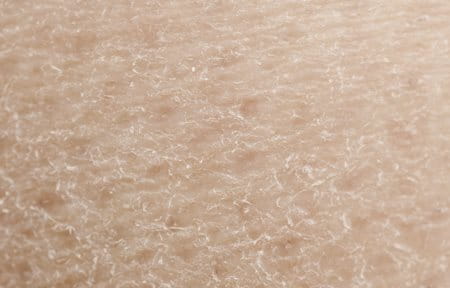
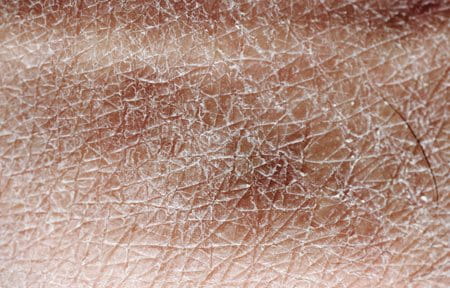
Dry skin
When facial skin first begins to lose moisture, the dryness may be only noticed as:
- Tightness
- Roughness
Very dry skin
If this initial dryness is not treated, it can progress to become:
- Very tight
- Scaly
- Chapped
- Itchy
At this stage it is possible that dryness-induced fine lines develop, which contributes to premature skin ageing and wrinkle formation.
Sensitive dry facial skin
When the face becomes dry, it will often also be sensitive; however, facial sensitive skin is not always related to dryness. It is always important to avoid skin care products that contain irritating ingredients such as perfumes and colourants. Always check that the product is dermatologically tested on sensitive skin.
Dry facial skin and diseases
- The medical term for dry skin is Xerosis. It comes from Greek; ‘Xero’, means ‘dry’, and ‘osis’ means ‘disease’.
- Inflammatory skin conditions like Atopic Dermatitis and Psoriasis are also linked to facial dryness.
- Metabolic conditions such as diabetes mellitus and kidney diseases can also increase the risk of dry skin.
- Some acne medications, either topical or oral, can cause oily, acne-prone skin to become very dry.
There is further information on dry skin, including tips on preventing dry skin, as well as information on other skin conditions such as Atopic Dermatitis, Psoriasis and diabetes, throughout our website. But if you are worried or unsure about your symptoms, or they are becoming worse, we recommend you see your doctor or dermatologist for a face-to-face diagnosis.
Attention
Causes & Triggers
Understanding the causes of dry facial skin
There are many internal and external factors relating to dry facial skin, all of which contribute to the same skin dehydration process. The severity of the dry skin will depend on the number and intensity of these factors.
External causes
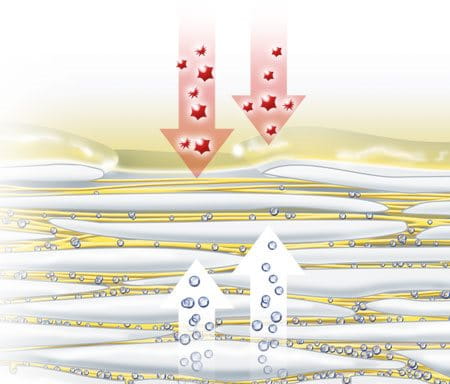
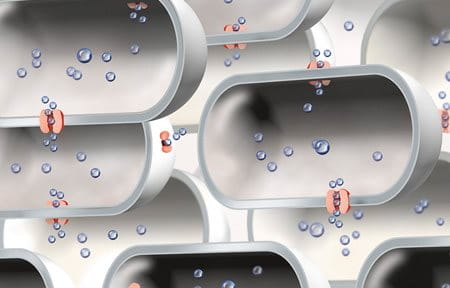
All the external causes of dry facial skin cause the natural lipid surface barrier to deteriorate. Once this lipid barrier is broken, moisture can evaporate and the vital moisture-binding substances are easily washed out. As these natural moisturising factors are missing, the skin cannot hold as much water and becomes dry until they are replenished, and the lipid barrier on the surface is repaired.
If the dry skin is not treated with moisturisers that contain moisturising factors, the dryness can progress deeper into the facial skin and disrupt moisture networks in the deeper layers of the skin.
The natural upward flow of moisture into the upper layers is reduced, resulting in very dry skin.
External triggers
The main external triggers are environmental triggers and inappropriate facial skin care routines. The face is generally exposed to these external causes of dry skin much more frequently than the rest of your body:


Environmental
- Harsh weather conditions - hot, cold and dry air.
- Seasonal changes - Dry skin symptoms are more common in the winter and summer months.
- Ultraviolet (UV) sunlight can increase the rate of skin ageing, and skin becomes more prone to dryness as it ages.
Skin care
- Frequent washing, or long, hot baths or showers, removes away the lipids that make up the skin barrier.
- Inappropriate facial skin care routine – It is important to follow a routine, and use products, that are suitable for dry skin. It is especially important not to use strong soaps that strip away natural skin lipids.
Medication
Some medications have the side effect of changing the water balance within the skin. Medications that control blood pressure, known as diuretics, are known to have this side effect. Always check with a doctor or pharmacist if you are concerned a medication may contribute to dry skin.
Internal factors
Genetic influences
Every person has a unique set of genes, which determine skin characteristics like pigmentation, moisture and lipid levels. This means that, under identical conditions, different people will have different moisture and lipid levels in their skin. Additionally, diseases such as Atopic Dermatitis, Psoriasis, diabetes and ichthyosis often, but not always, have a genetic link.

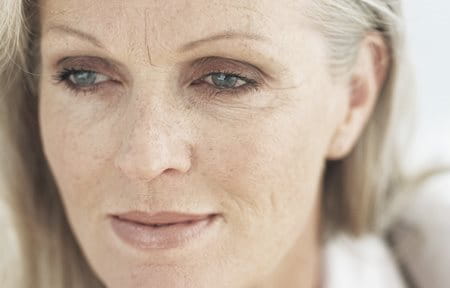
Hormonal influences
When the level of these hormones change, for instance during adolescence and menopause, the skin’s moisture balance can be affected. During menopause the amount of estrogen in the body is reduced, and this can result in the skin becoming dryer. Dry skin may also occur during pregnancy.
Age
The skin’s ability to produce sweat and lipids decreases as people get older due to a reduction in function of sebaceous and sweat glands in the skin. Increasing age leaves the skin more prone to dryness and the drier the skin the more prone it is to the formation of dryness-induced fine lines and wrinkles. Read more about age-induced dryness.
Premature skin ageing
Skin ageing occurs naturally with increasing age. However, extensive and unprotected exposure to ultraviolet (UV) light can increase the rate of skin-ageing, thus leading to premature fine lines and wrinkles.
Diet
The skin requires a range of nutrients, unsaturated fatty acids and vitamins in order to function correctly. A lack of any of these can contribute to dry skin.
Contributing Factors
Factors that can contribute to dry facial skin
Additional to the main causes of dry facial skin, several other factors also affect the severity of facial skin dryness. An awareness of these will help avoid them and thereby reduce their impact.
Lack of effective treatment
If dry facial skin is not treated properly, or ineffective moisturisers are used, the dry skin condition is likely to become worse, rather than improving slightly. This is because the dryness progresses to affect moisture networks in the deeper layers of the skin, which supply moisture to the upper layers of the skin.


Excessive sun exposure may increase facial skin dryness. It is therefore important to choose a sunscreen that is formulated for dry skin, which contains moisturising actives in addition to an appropriate Sun Protection Factor (SPF). It is also vital that the sunscreen, and any other skin care products used on dry skin, do not contain irritating perfumes and colourants, as dry skin, especially dry facial skin, is more prone to irritation than normal skin.
Occupational hazards
Certain situations require being in conditions that may cause dry facial skin. For instance, outdoor-sports, gardening, holidays in cold areas will increase the risk of developing dry facial skin.
Dehydration
The amount of moisture in the skin is related to the amount of water the body can supply. Therefore, when the body is dehydrated, it is unable to supply adequate amounts of water to the skin.
People who are prone to dehydration are elderly people, as the sensation of thirst diminishes with age, and people who do manual labour or a lot of exercise.
Smoking
The toxins in cigarette smoke, including nicotine, may reduce the blood flow. This results in a slower metabolism within the skin. Skin may dry out and age prematurely.
Solutions
What are the solutions for dry facial skin?
Avoiding contributing factors
In addition to having a good cleansing and moisturising routine, avoiding factors that contribute to dry skin is important. This will help to reduce the impact of dry skin and the need for treatment:
- Avoid dry air by spending less time outdoors in hot and cold weather, and by using a humidifier indoors when the heating is on.
- Reduce the time spent in hot water by having quick showers instead of long baths.
- Use care products without perfumes, colourants and parabens to avoid irritation.
Dry and very dry facial skin needs a comprehensive skin care routine, including using appropriate skin cleansers, moisturisers and sunscreens. Water-based skin cleansers with added moisturising factors are suitable for dry to very dry facial skin, while oil-based cleansers are ideally suited for the skin care of very dry and extremely dry skin, including Atopic Dermatitis.
Cleansing dry or very dry facial skin
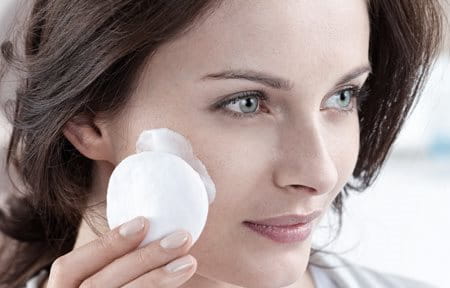
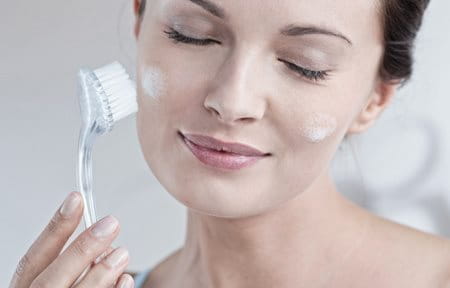
A mild but effective skin cleanser is an essential prerequisite to skin care for normal or dry skin, as well as for acne-prone skin, and Atopic Dermatitis. The importance of a well-aligned daily cleansing and moisturising routine for face care cannot be over-emphasised - well cleansed facial skin with a functioning surface barrier absorbs and retains moisture effectively.
Extra mild Eucerin DermatoCLEAN Cleansing Milk with moisturising actives cleanses thoroughly, prevents the skin from drying out, and synergistically enhances the efficacy of facial moisturising creams to improve skin condition. It is suitable for dry and sensitive facial skin. Eucerin DermatoCLEAN Clarifying Toner instantly tones and moisturises the skin, and is suitable for all facial skin types.
Moisturising facial skin

The key to moisturising dry or very dry facial skin is to replenish missing natural moisturising factors, which attract moisture towards, and bind moisture into the stratum corneum, or upper layer of the skin. This prevents the skin from becoming dry, and reduces roughness and alleviates tightness. Eucerin Dry Replenishing Face Cream 5% Urea contain the natural moisturising factors Urea and Lactate, which regulate moisture content by binding water in the upper layers of the skin.
Both Urea and Lactate are well-tolerated, non-toxic and non-allergenic natural skin compounds.
Caring for dry ageing skin
Caring for ageing skin requires addressing the common causes of skin ageing. As skin ages, skin dryness and UV damage contribute to the development of fine lines and wrinkles, loss of skin volume and density and radiance. This makes following an effective skin care routine, especially moisturising and protecting skin against UVA and UVB light even more important. Additionally, ageing skin often requires deep skin hydration to reduce the appearance of, and prevent the development of further wrinkles. Read more about age-induced dryness.
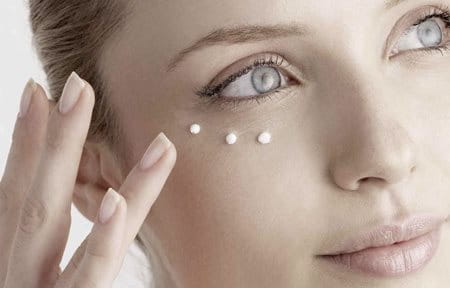
Hyaluron, also known as Hyaluronic Acid, is an essential component of connective tissue.
It has high water binding capacities, improving skin regeneration and enhancing the diffusion of nutrients. As facial skin ages, the amount of free Hyaluron decreases in the epidermis and, particularly, in the lower dermis skin layers. Hyaluronic Acid, applied topically, can slow down and revert wrinkle formation. Additionally, this may be further optimised by a suitable moisturising skin care routine.
Our brand values

We deliver a holistic dermo-cosmetic approach to protect your skin, keep it healthy and radiant.

For over 100 years, we have dedicated ourselves to researching and innovating in the field of skin science. We believe in creating active ingredients and soothing formulas with high tolerability that work to help you live your life better each day.

We work together with leading dermatologist and pharmacist partners around the world to create innovative and effective skincare products they can trust and recommend.






